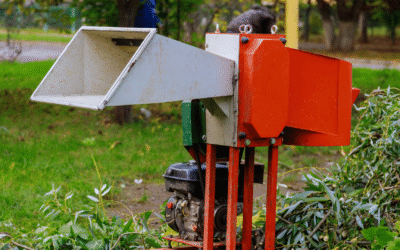Walking a dog should be a joyful experience, yet for many, it becomes a tug-of-war. Enter the dog harness, a game-changer for both pet and owner. Unlike traditional collars, harnesses distribute pressure evenly across a dog’s body, making them a safer and more comfortable option, especially for those prone to pulling.
Harnesses have quickly become essential, offering improved safety and ease during walks. As more pet owners discover their benefits, understanding how to choose the right one is crucial. Dive into the world of dog harnesses and find the perfect fit for your furry friend.
Top Amazon Sellers
Key Takeaways
- Balanced Pressure Distribution: Dog harnesses ensure even pressure distribution across the dog’s body, reducing the risk of neck injuries and providing a safer, more comfortable alternative to traditional collars.
- Essential Fit Considerations: A proper fit is crucial for harness effectiveness. Measuring your dog accurately ensures comfort while avoiding chafing by allowing space for two fingers underneath the straps.
- Variety of Harness Types: Different harness styles, such as step-in or over-the-head, cater to varying dog sizes and activity levels. Matching the harness type to your dog’s specific needs enhances safety and functionality.
- Durability and Innovation: High-quality materials and features such as reflective strips, quick-release buckles, and adjustable straps contribute to a harness’s durability and usability, ensuring enhanced safety during walks.
- Effective Training Tool: Harnesses, particularly front-clip designs, facilitate training by discouraging pulling and fostering positive reinforcement, making walks more enjoyable and controlled.
Choosing The Best Dog Harnesses
Selecting the best dog harnesses involves understanding several key elements to ensure comfort and safety.
Key Considerations
Fit plays a crucial role in harness selection as a well-fitted harness guarantees comfort and functionality. Owners should accurately measure their dogs as sizing depends on physical dimensions rather than weight. It’s essential to ensure there’s enough room to slide two fingers under the straps to avoid chafing.
Types of Harnesses
Various types of harnesses cater to different needs. Step-in harnesses are popular for smaller dogs due to ease of use, while over-the-head styles better suit larger breeds. Additionally, safety harnesses attach to seatbelts for car travel. It’s vital to match the harness type to the dog’s size and activity level for optimal comfort and security.
Evaluating Top Dog Harnesses
Dog harnesses often differ in comfort, durability, and unique features. A good harness ensures both safety and freedom during walks.
Comfort and Fit
Proper fit prevents discomfort and injury. Precise measurements allow enough space for two fingers under the straps. Well-fitted harnesses distribute pressure evenly, offering balance and security.
Durability and Materials
Harness durability depends on quality materials and construction. Strong fabrics such as strengthened nylon or polyester extend lifespan. Reliable stitching secures points of tension, maintaining harness integrity over time.
Innovative Features
Modern harnesses may include reflective strips and quick-release buckles. Adjustable straps enhance adaptability to various body shapes. These features improve usability and safety, making walks more enjoyable.
Benefits of Dog Harnesses Over Collars
Dog harnesses offer several advantages, distributing pressure more evenly and reducing the risk of neck injuries compared to collars. They are particularly beneficial for dogs that pull.
Enhanced Control
Harnesses provide owners with enhanced control during walks by discouraging pulling through even pressure distribution across the dog’s body.
Safety Considerations
Harnesses improve safety by minimising choking risks since neck pressure is reduced. They’re ideal for the best dog harnesses that prioritise both comfort and security.
Training Your Dog with a Harness
Harnesses are instrumental in training dogs, offering control and discouraging pulling. Their design encourages eye contact, promoting positive reinforcement.
Getting Started
Select a front-clip harness, as it aids redirection by gently turning the dog towards the walker. Begin training in a familiar setting to minimise distractions during initial use, ensuring a calm environment.
Common Mistakes to Avoid
Avoid using poorly fitted harnesses, which can cause discomfort and impede training. Never allow prolonged tension on the leash, as it reinforces the dog’s pulling behaviour instead of correcting it.
Conclusion and Top Picks
Choosing the right dog harness is vital for ensuring a pet’s safety, comfort, and overall well-being. With a wide array of options available, finding the perfect fit can transform walks into a more enjoyable experience for both dogs and their owners. By focusing on fit, durability, and specific needs, pet owners can select a harness that not only meets their dog’s requirements but also enhances training and control. Investing in a quality harness with innovative features can make a significant difference in a dog’s daily routine, promoting a healthier and more secure lifestyle.
Frequently Asked Questions
What are the benefits of using a dog harness over a collar?
Dog harnesses offer key benefits over traditional collars, such as reducing the risk of neck injuries and minimising choking hazards. They distribute pressure evenly across a dog’s body, which is particularly beneficial for dogs that pull. Harnesses also provide better control during walks, discouraging pulling behaviour and enhancing the safety and comfort of both the dog and the owner.
How should I measure my dog for the right harness fit?
To measure your dog for a harness, focus on the girth, which is the circumference of the chest just behind the front legs. Use a flexible tape measure to ensure accuracy. Choose a harness that allows space to insert two fingers between the harness and the dog’s body to prevent chafing and ensure comfort and safety.
What types of harnesses are available for different dog needs?
Harnesses come in various designs to suit different needs. Step-in harnesses cater to smaller dogs, over-the-head styles are ideal for larger breeds, and safety harnesses are designed specifically for car travel. Selecting the proper type based on your dog’s size and activity level will ensure optimal comfort and security.
Why is a proper fit crucial for a dog harness?
A well-fitted dog harness is essential to prevent discomfort and potential injuries. Proper fit ensures that pressure is distributed evenly, offering better balance and security. It’s vital to choose a harness based on the dog’s physical dimensions rather than weight for the best fit.
What features should I look for in a durable dog harness?
When selecting a durable dog harness, look for quality materials like strengthened nylon or polyester and strong, reliable stitching. Modern features such as reflective strips enhance visibility and safety, while quick-release buckles improve usability, making walks more enjoyable and secure.
How do harnesses aid in training dogs?
Harnesses play a crucial role in dog training by providing better control and discouraging pulling. A front-clip harness is especially effective in promoting positive reinforcement through eye contact. It’s recommended to start training in a familiar, calm environment to minimise distractions and reinforce good behaviour.
What are common mistakes to avoid when using a dog harness?
Avoid using poorly fitted harnesses, as they can cause discomfort and lead to injuries. Ensure there’s no prolonged tension on the leash as it may inadvertently reinforce pulling behaviour. Always choose a harness that matches your dog’s specific needs for effective control and comfort.












